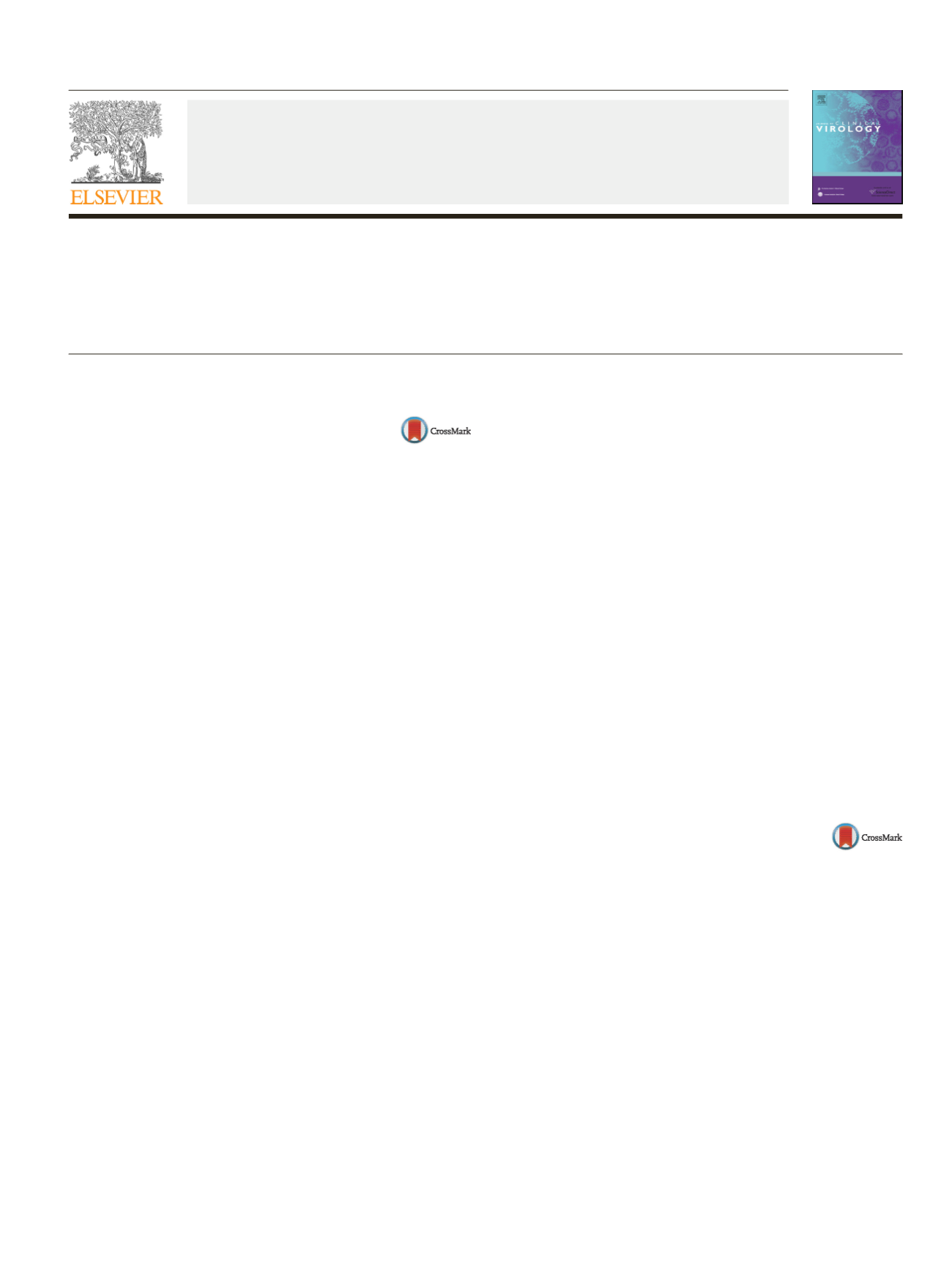
 Journal of Clinical Virology 82S (2016) S1–S142
Journal of Clinical Virology 82S (2016) S1–S142
Contents lists available at
ScienceDirectJournal of Clinical Virology
journal homepage:
www.elsevier.com/locate/jcvAbstracts of the 19th Annual Meeting of the European Society for
Clinical Virology, 14th–17th September 2016, Lisbon
Abstract no: 75
Presentation at ESCV 2016: Oral 1
Medico-economic impact of the rapid diagnosis
of influenza in paediatric emergency
department by using a new sensitive
chromatographic immunoassay
A. Cantais
1 ,∗
, O. Mory
1, M. Costille
1, A. Carlino
2,
A. Cantais
1 , A. Giraud
1 , B. Pozzetto
2 , S. Pillet
21
Paediatric Emergency Department, University
Hospital of Saint-Étienne, France
2
Laboratory of Infectious Agents and Hygiene,
University Hospital of Saint-Étienne, Saint-Étienne,
France
Background:
The practicability of rapid immunochromato-
graphic antigen detection tests (RIADT) for the diagnosis of
influenza allows their use by non-trained healthcare profession-
als, even beside the bed of the patient. Newly designed assays such
as the Becton Dickinson (BD) Veritor
TM
System for Rapid Detection
of Flu A + B have shown improved analytical performances. How-
ever, the medico-economic impact of their direct implementation
in clinical wards has been poorly evaluated.
Objectives:
(1) To measure the impact of the rapid diagnosis
of influenza by using the Veritor
TM
System directly in the pae-
diatric emergency room, on the care of patients and notably on
the reduction of supplementary investigations and antibiotics dur-
ing the 2015–2016 winter season, and (2) to verify the analytical
performances of this new test.
Study design:
A nasopharyngeal aspirate was performed to
all the patients aged between 0 and 18 years consulting at the
paediatric emergency department of the University Hospital of
Saint-Etienne during the 2016 influenza season. The presence of
influenza A and B viruses was tested with the Veritor
TM
System
in the emergency room 24/7. The clinical specimen was also sent
to the laboratory in order to perform routine tests in the opening
hours, including the detection of viral antigens by immunofluores-
cence (bioMérieux) or of viral RNA by using a laboratory-developed
RT-qPCR assay on the BDMAX platform. In case of discrepant result
between the different assays, the final diagnosis was assessed by
the RT-qPCR assay. Before performing the Veritor
TM
System, the
clinician was asked to fill in a questionnaire listing the tests that
he/she would have prescribed in the absence of the rapid test-
ing; the same questionnaire was completed after the result of the
Veritor
TM
test was available.
Results:
A total of 514 patients (sex ratio M/F: 1.11; median of
age 2.7 years) were included between January 7 andMarch 19 2016.
Comparative results between the RIADT and the routine assays
were available for 477 specimens, including 45 and 185 positive
ones for influenza A and influenza B, respectively. For influenza
virus A, the sensitivity, specificity, negative predictive value and
positive predictive value were 94.9, 98.2, 96.4 and 97.4%, respec-
tively; for influenza virus B, they were 97.4, 96.4, 98.2 and 94.9%
respectively. The use of the RIADT at the emergency room saved
the prescription of: 51.7% of C-reactive protein (CRP) dosage in cap-
illary blood, 47.9% of blood sampling, 49.2% of CRP measurement,
57.4% of procalcitonin dosage, 68.8% of blood culture, 41.6% of urine
test strip, 79.2% of cytobacteriological examination of urine, 69.0%
of chest X-rays, 77.8% of lumbar puncture, 43.8% of hospitalization
and 70.1% of antibiotics.
Conclusions:
The excellent analytical performances of the
Veritor
TM
System allow its use as point-of-care test to perform an
accurate and rapid diagnosis of influenza at the paediatric emer-
gency room. In addition to deliver a rapid etiological diagnosis,
this strategy was found to save the prescription of a considerable
amount of unnecessary tests and antibiotics.
http://dx.doi.org/10.1016/j.jcv.2016.08.002Abstract no: 306
Presentation at ESCV 2016: Oral 2
Molecular characterization of human
rhinovirus in Portugal: 2014–2015 season
P. Cristóvão
∗
, P. Pechirra, P. Conde, I. Costa,
R. Guiomar
National Influenza and Other Respiratory Viruses
Reference Laboratory, Infectious Diseases
Department, National Institute of Health Dr. Ricardo
Jorge, Lisbon, Portugal
Background:
Human rhinoviruses (HRV) frequently cause mild
upper respiratory tract infections and more severe disease mani-
festations such as bronchiolitis and pneumonia. Plays an important
role in asthma and chronic lung disease exacerbations. Genetic
characterization of HRVs detected by molecular methods has
revealedmuch greater diversity, enabling the identification of three
species (HRV-A, HRV-B and HRV-C) and a great number of types.
The aim of this study is to characterize HRV detected in respira-
tory specimens from influenza-like illness cases (ILI), received in
1386-6532/


















